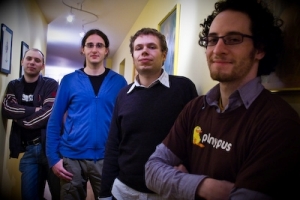
They used Planypus and all ended up here together
After the dot-com bubble burst in 2001, it became clear that the companies that survived had something in common: websites that were more interactive, collaborative and dynamic than the ones that had collapsed. This survival of the fittest was dubbed Web 2.0. Since then, the term has come to represent everything from social networking sites and wikis to blogs and YouTube. Meet two local Jews, part of the 2.0 explosion, who are finding better ways to work the web.
More like Wevite
When Stan Mazo graduated from college, he realized he no longer lived within five blocks of his entire social network, and his repertoire of frequented bars and restaurants had increased exponentially. His friends were experiencing the same thing, so they put together a tool to simplify the long e-mail chains and back-and-forth text messaging that preceded every outing.
At first, the online tool used between the group of friends was just that. But as time went on, Mazo and the others began coming home from their day jobs and committing their evenings to tweaking the site. “It became my passion,” Mazo says. “When you love something, you want to evangelize to others.” In 2005, Mazo, Yan Pritzker, Alex Chizhik, Alex Antonov and Anton Mostovoy named the tool Planypus and committed themselves to bringing to the public to what had begun as their own private social planner.
While it might draw an immediate comparison to Evite, Planypus is better thought of as a wiki for your social life. Collaboration is its main feature, as details such as time and location can be voted on and a separate “planspace” is designated for discussion about issues such as where to meet, who can bring wine to the dinner party or who will be on what flight for an upcoming ski trip.
In order to keep track of all the variables, Planypus has a convenient notification system in which you can receive an e-mail or text message when any new plan, comment, announcement or final decision is made. If you’d rather keep your inbox free of constant notifications, settings can be changed so that you only receive them for same-day plans.
Planypus, which was named when one of the founders returned from a trip to Australia and was asked in a start-up meeting whether he had seen a platypus, is also refreshingly free of ads. Mazo and company prefer bringing in revenue through partnering with event-centric websites, which allow them to turn their event listings into interactive destinations.
“
Planypus becomes embedded into the host site to allow (the host) to build a community around their events and make their event listings more useful and relevant to their users,” Mazo says. Once the embedding occurs, the host site is provided with a statistical analysis of user planning activity, and they can use the information to make their editorial content better fit how people use their site.
Mazo, who recently used Planypus to organize a seder with nearly 30 of his friends, added, “Planypus is sort of a marketplace of events, and it removes the barrier from suggesting an event or voicing your opinion.”
Staying simple
Jason Fried graduated from college in the mid-‘90s with a degree in finance, but he always had an inkling that his career wouldn’t follow a typical path. “I didn’t want to go work in a bank,” he says. “I always wanted to start my own business, and the web was really starting to hit then. No one was an expert in web design at that point, so I picked it up and went with it.”
Fried took a job in San Diego but “realized pretty quickly [he] wasn’t built to work for other people.” After less than a year, he picked up and moved back to Chicago, his hometown and the city where he had the biggest support network to stand by him in his newest undertaking – starting his own web design company.
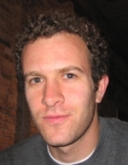
This guy made a successful venture even more successful
He co-founded 37signals, named for the 37 radio telescope signals that are potential messages from extraterrestrial intelligence, in 1999. Initially, the company did web design for external clients. As business boomed, Fried and his co-workers decided they needed a better way to manage their client projects.
“
We looked around the market to see what kind of products were out there, and nothing was ideal at all,” he says. “They were slow and confusing and had too many features, so we decided to build our own.” After receiving positive feedback when clients saw the web-based project management tool, Fried decided the product might be useful to a wider population. He dubbed the tool Basecamp and put it on the market in early 2004.
Within a year, Basecamp was generating more revenue than the web design side of the company, so Fried adapted. Since the release of Basecamp, 37signals has released three main web-based applications: Backpack, a personal information manager and intranet for small businesses; Campfire, a real-time, business-oriented chat service; and Highrise, a contact manager.
In distinguishing 37signals’ products from the competition, Fried, a Wicker Park resident, echoes his company’s focus on simplicity. “The fundamental difference with our products is that they do less than others,” he says. “Most programs go overboard, but we focus on the basics and make sure our products are clear, easy to use and enjoyable.” The formula is one that has proven popular, as 37signals’ revenue has doubled every year since 2004 and Basecamp alone has more than 2 million account holders.
In addition to operating their own successful web applications, one of 37signals’ programmers created the framework that is widely credited as providing the spark for the Web 2.0 revolution. Ruby on Rails, created by David Heinemeier Hansson to build Basecamp, is the web application framework that allows for rapid development of collaborative sites. And while Fried called Web 2.0 a “marketing term,” he went on to say that Basecamp “was the first web-based application in the world that held up as an example that Web 2.0 could actually be successful and generate revenue.”
It’s hard to predict what will be next in the rapidly advancing world of the web, but it’s a fairly safe bet that Mazo and Fried will be two of the people leading the 3.0 revolution.
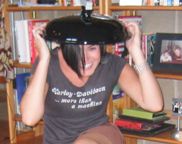
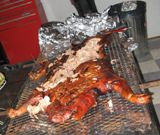


.jpg)
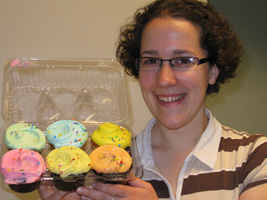

.jpg)



